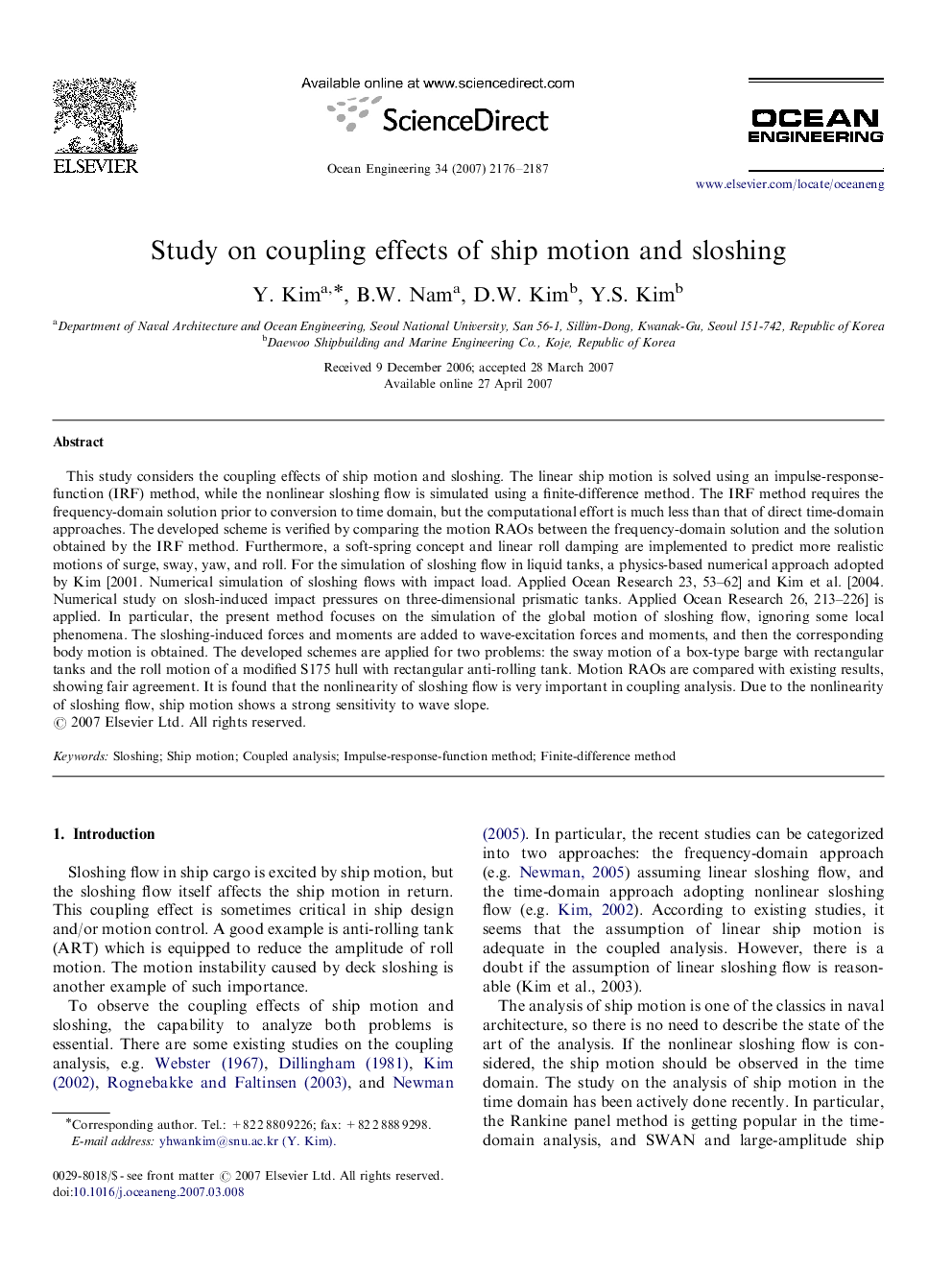| Article ID | Journal | Published Year | Pages | File Type |
|---|---|---|---|---|
| 1726971 | Ocean Engineering | 2007 | 12 Pages |
This study considers the coupling effects of ship motion and sloshing. The linear ship motion is solved using an impulse-response-function (IRF) method, while the nonlinear sloshing flow is simulated using a finite-difference method. The IRF method requires the frequency-domain solution prior to conversion to time domain, but the computational effort is much less than that of direct time-domain approaches. The developed scheme is verified by comparing the motion RAOs between the frequency-domain solution and the solution obtained by the IRF method. Furthermore, a soft-spring concept and linear roll damping are implemented to predict more realistic motions of surge, sway, yaw, and roll. For the simulation of sloshing flow in liquid tanks, a physics-based numerical approach adopted by Kim [2001. Numerical simulation of sloshing flows with impact load. Applied Ocean Research 23, 53–62] and Kim et al. [2004. Numerical study on slosh-induced impact pressures on three-dimensional prismatic tanks. Applied Ocean Research 26, 213–226] is applied. In particular, the present method focuses on the simulation of the global motion of sloshing flow, ignoring some local phenomena. The sloshing-induced forces and moments are added to wave-excitation forces and moments, and then the corresponding body motion is obtained. The developed schemes are applied for two problems: the sway motion of a box-type barge with rectangular tanks and the roll motion of a modified S175 hull with rectangular anti-rolling tank. Motion RAOs are compared with existing results, showing fair agreement. It is found that the nonlinearity of sloshing flow is very important in coupling analysis. Due to the nonlinearity of sloshing flow, ship motion shows a strong sensitivity to wave slope.
